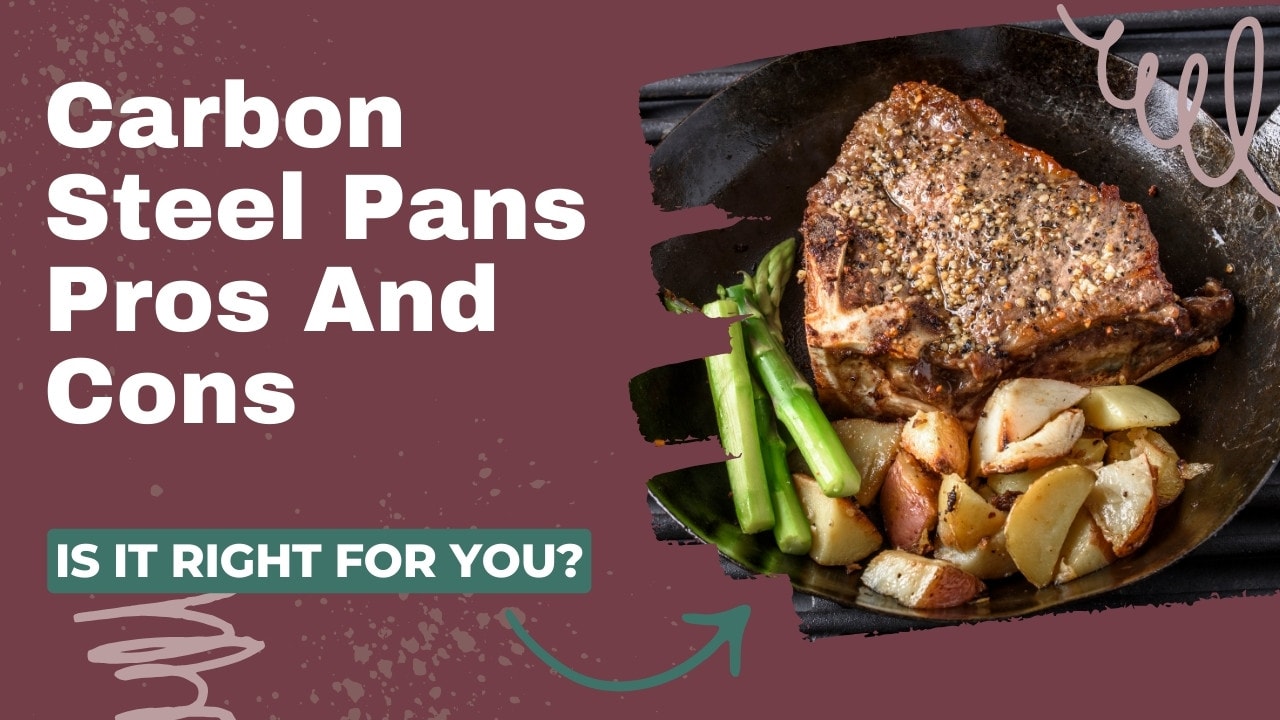Light and durable with amazing heat conduction, carbon steel cookware has a lot going for it. I got my first carbon steel wok in my early twenties and loved exploring a whole new world of cooking and creating incredible meals. Its responsiveness to heat is off the charts, and to this day, the trusty wok is one of the most used items in my kitchen.
But will it become your new favorite cookware material? Let’s discuss carbon steel cookware’s pros and cons and find out if it will suit your kitchen and cooking style.
Carbon Steel Pros and Cons
Here’s a quick look at what we’ll be covering.
Pros
Cons
Advantages of Carbon Steel Cookware
1. Lightweight and Easy to Handle
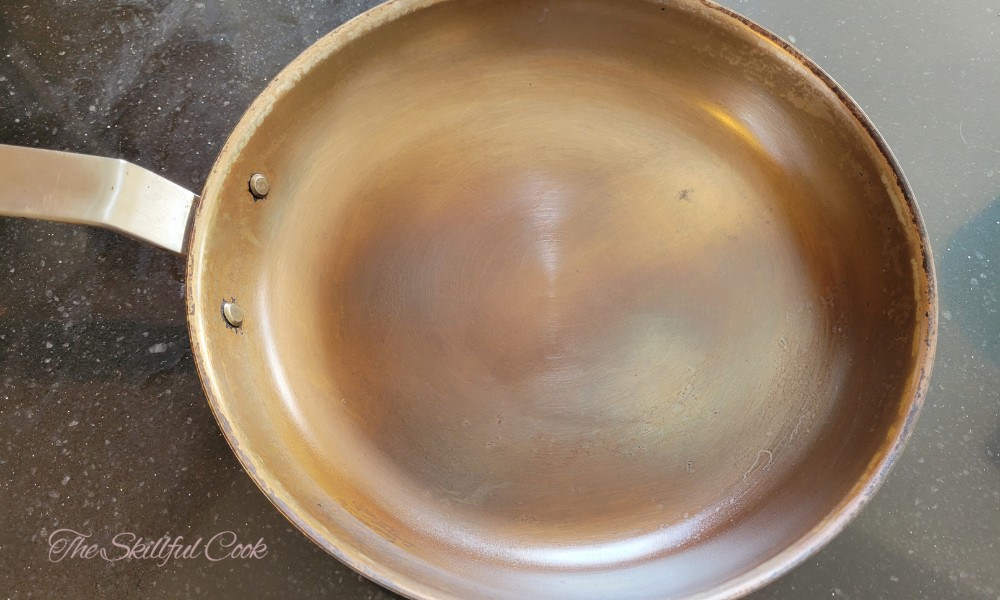
Carbon steel pans are significantly lighter than cast iron skillets of the same size. This makes them easier to transport when going from stovetop to oven or when cooking outside on a grill or over an open flame. Carbon steel is great for people who want the searing power of cast iron without the weight. Carbon steel skillets often have stainless steel handles, which stay cool and are easy to handle.
2. It’s Semi-Nonstick When Seasoned
When carbon steel is well seasoned, it develops a natural nonstick surface. And the good news is that the more you use carbon steel, the more layers of seasoning it gets. With high-quality carbon steel, the right cooking techniques, and good thick seasoning, food rarely sticks – making it a great pan to cook everything from breakfast to dinner in.
3. Handles High Heat Beautifully
Carbon steel cookware can handle temperatures up to 1200 degrees Fahrenheit (648 degrees Celsius). It handles temperature changes beautifully, which is why many professional chefs favor it. Its responsiveness to heat changes means there’s less chance of food burning, sticking, or overcooking.
4. Non-toxic
Carbon steel is made of iron and carbon. It has no Teflon (PTFE) or sol-gel coatings like nonstick pans and doesn’t have any paints or glazes that could contain heavy metals. This makes carbon steel safe and durable through and through. You can use all utensils – even metal ones – on it without worrying about scratching through a coating.
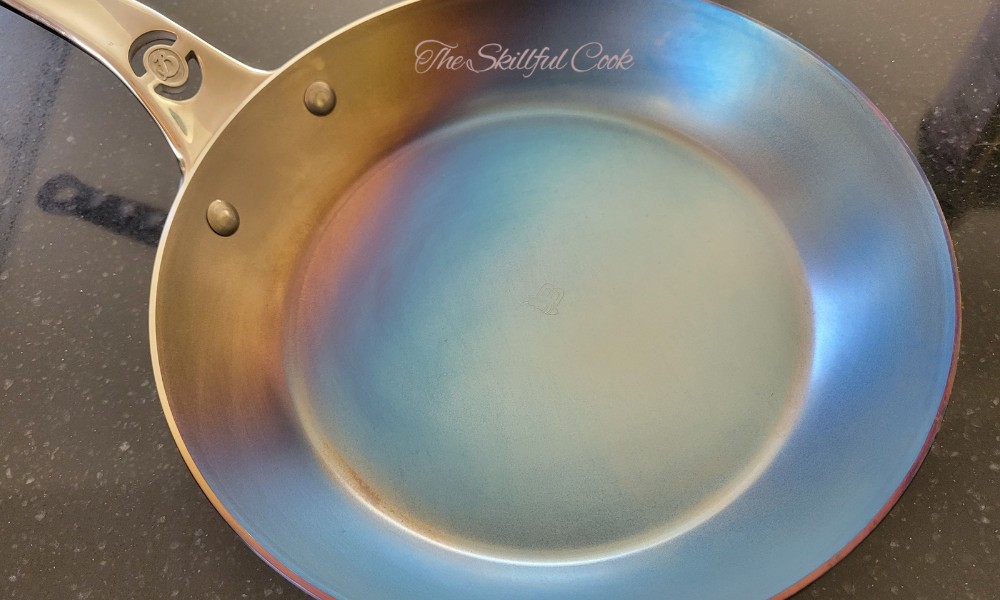
5. Nickel Free
Unlike stainless steel, carbon steel is usually nickel-free. Carbon steel and stainless steel are both metal alloys – but carbon steel is a simpler one. Stainless steel has nickel and chromium in addition to iron and carbon – which makes it potentially concerning for those with nickel allergies. So carbon steel is a great alternative for those looking for nickel-free cookware.
6. Very Responsive to Temperature Changes
What I love most about carbon steel is its responsiveness to temperature changes. When you increase or decrease your stove’s heat, the pan’s temperature changes more quickly than cast iron, allowing for perfect sautéd seafood, seared steak, or scrambled eggs. This also helps prevent food from overheating or burning.
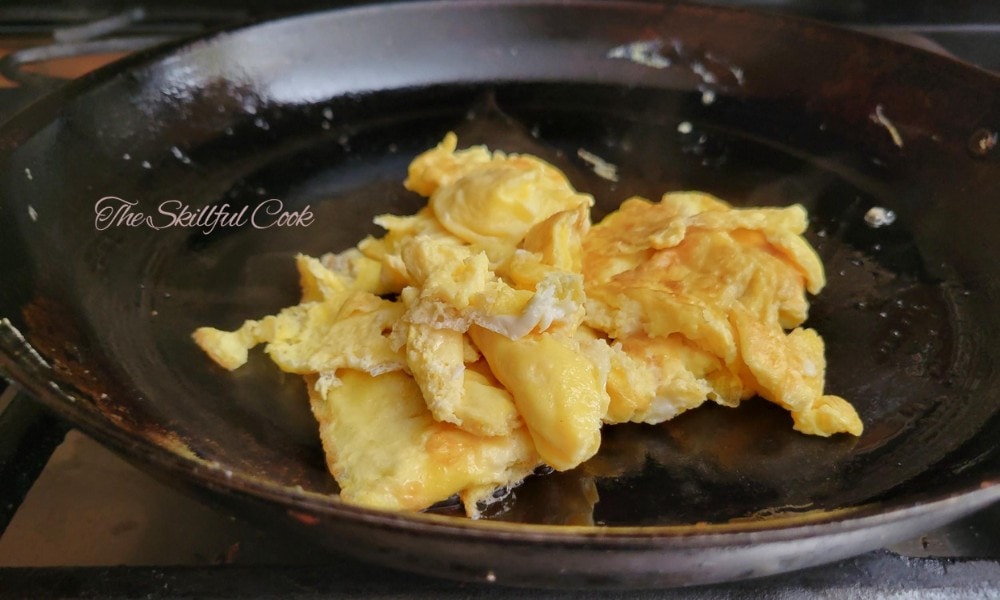
7. Durable
Being 98% iron, carbon steel is very strong. It’s hard to dent, scratch, or break a carbon steel pan, so it could spend years as the most-used pan in your kitchen. It can handle metal utensils, chain-mail scrubbers, and intense cooking techniques like stir-frying.
8. Versatile
From stovetop to oven, carbon steel is compatible with every stovetop, even induction. You can use carbon steel on gas, electric, and glass stoves. (But remember, if using an induction stovetop, bring carbon steel pans up to full temperature slowly or it may warp!) Since carbon steel is able to handle high heat, you can even take it camping and cook breakfast over a fire.
9. Lasts for years, if not decades
Looked after properly, carbon steel cookware will last decades. In fact, it gets better with age. As it builds layers of seasoning, cooking becomes a breeze. Food doesn’t stick to well-seasoned carbon steel, and the natural coating enhances the flavor of every dish.
Disadvantages of Carbon Steel Cookware
Even though I adore carbon steel, it does have some drawbacks.
1. Chance of Rust
Rust and carbon steel go hand in hand. It’s natural; iron rusts and carbon steel is 98-99% iron, so don’t worry if you see a rust spot appear at some point. The good news is it only takes a few minutes to fix a rust spot on a carbon steel pan with some coarse salt and oil. Wipe the rust away and re-season the pan. Seasoning will reduce the iron’s contact with oxygen and prevent rust from happening again.
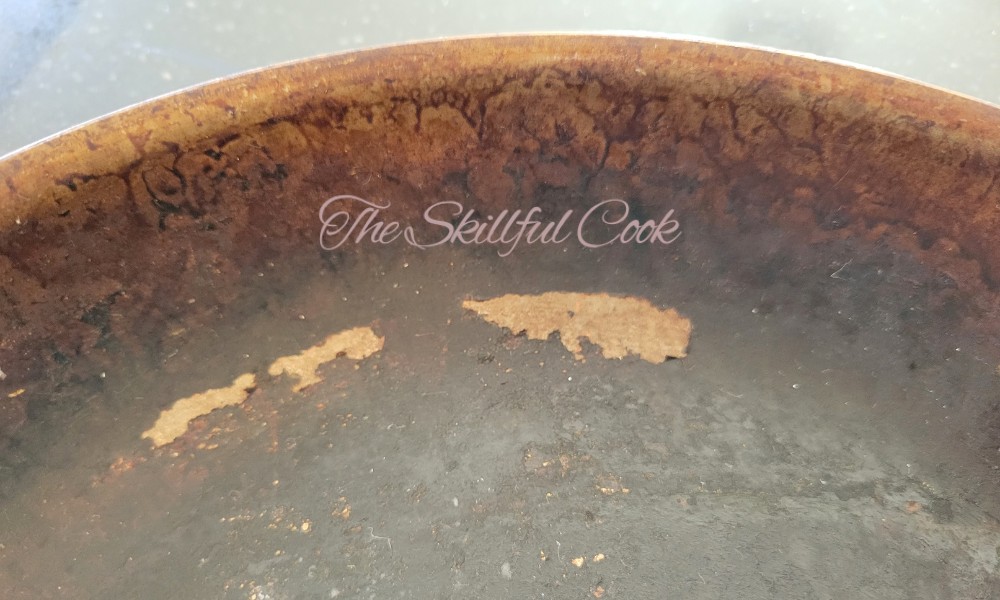
2. Requires Maintenance
True, carbon steel does require a little maintenance. You’ll have to keep an eye on the condition of your pan to see when it’s “dry” or patchy and needs another layer of seasoning. But seasoning carbon steel is quick and easy once you get the hang of it, and knowing when you need to reseason your carbon steel pan becomes second nature.
3. Not Dishwasher Safe
Carbon steel would be cookware from heaven if only it was dishwasher-safe. But alas, it’s not. Dishwashers will destroy the seasoning on a carbon steel pan. When you first begin to use your carbon steel pan, you may spend a fair bit of time scrubbing food off of it. But as you build both the seasoning on your pan and your skill in using it, cleaning it will become easier, too.
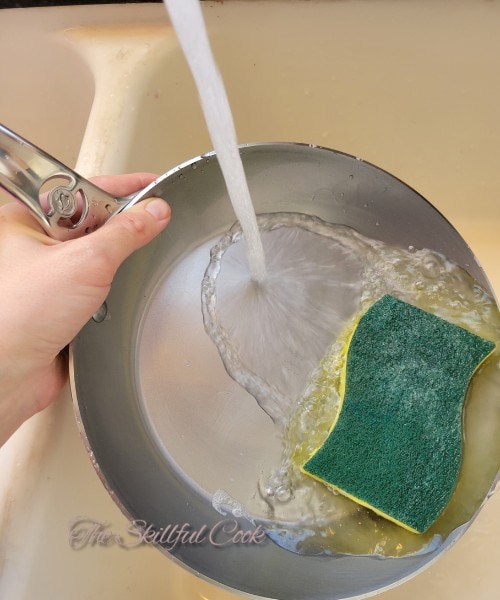
4. Reacts with Acids
Carbon steel cookware is considered reactive. That means citric and malic acids found in food can strip away the seasoning and then react with the iron. The chemical reaction between the acids and the pan can give your food a bitter or metallic taste from iron transferred to your food. So, carbon steel doesn’t work for cooking acidic foods, like vinegar or tomato-based sauce. Hint: try stainless steel for acidic foods like tomatoes.
5. Name Brands Can Be Expensive
Like all cookware, carbon steel comes in a range of prices and qualities. The best carbon steel cookware is either European-made or hand-forged by local artisans. Top brands of carbon steel cookware like de Buyer pan, or Made In are significantly more expensive than typical nonstick or even stainless steel pans. But when looked after properly, they can last much longer than ceramic or Teflon cookware.
Conclusion
Carbon steel cookware has more pros than cons and is worth the buy, in my opinion. Its responsiveness, adaptability to various cooking styles, and longevity means you’ll be happily cooking with it for decades! Just make sure to invest in high-end carbon steel and put the time into learning how to cook with and care for it correctly.
We’d love to hear from you if you have any questions about carbon steel! So leave a comment below, and we’ll get back to you as soon as we’ve finished cooking.

